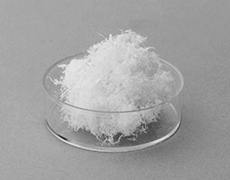Newsletters
Atelocollagen for regenerative medicine
09 March 2016
This edition of the newsletter summarizes three published reports describing the clinical application of atelocollagen for regenerative medicine (cell transplantation).
Clinical trial of transplantation of peripheral blood-derived CD34-positive cells to fracture site
Article information 1
Local transplantation of granulocyte colony stimulating factor-mobilized CD34+ cells for patients with femoral and tibial nonunion: pilot clinical trial.
Kuroda R, Matsumoto T, Niikura T, Kawakami Y, Fukui T, Lee SY, Mifune Y, Kawamata S, Fukushima M, Asahara T, Kawamoto A, Kurosaka M.
Stem Cells Transl Med. 2014 Jan;3(1):128-34. PMID: 24307697
Overview 1
Approximately 5 to 10% of fractures are not cured, resulting in delayed healing or false joints; treatment of the false joint is a problem that can require multiple surgical operations.
Therefore, the authors conducted a clinical trial in which autologous peripheral blood-derived CD34-positive cells, obtained from a patient with a false joint, were mixed with atelocollagen and transplanted into a fracture site.
Among the seven patients enrolled in this study, there were no life-threatening adverse events. Healing was confirmed at an average of 12.6 weeks (by clinical evaluation) and an average of 16.1 weeks (by radiological evaluation).
Clinical study of auricular-derived chondrocyte transplantation to nasal deformities
Article information 2
Preclinical and clinical research on bone and cartilage regenerative medicine in oral and maxillofacial region.
Tsuyoshi Takato, Yoshiyuki Mori, Yuko Fujihara, Yukiyo Asawa, Satoru Nishizawa, Sanshiro Kanazawa, Toru Ogasawara, Hideto Saijo, Takahiro Abe, Masanobu Abe, Hideyuki Suenaga, Yuki Kanno, Madoka Sugiyama, Kazuto Hoshi.
Oral Science International, Volume 11, Issue 2, May 2014, Pages 45-51.
Overview 2
Chondrocyte injection into the implant removal area and saddle nose after nose rhinoplasty have been used previously, but this technique is considered insufficient for the reconstruction required for 3D morphological form.
Therefore, the authors conducted a clinical study using autologous auricular-derived chondrocytes, atelocollagen, and poly(lactic acid) (PLLA) scaffolds for patients with nasal deformities associated with cleft lip and palate.
Among the three patients enrolled in this study, there were no serious adverse events, and good clinical outcomes were observed.
Follow-up study of clinical trials on knee-derived chondrocyte transplantation into cartilage defects
Article information 3
Evaluation of magnetic resonance imaging and clinical outcome after tissue-engineered cartilage implantation: prospective 6-year follow-up study.
Takazawa K, Adachi N, Deie M, Kamei G, Uchio Y, Iwasa J, Kumahashi N, Tadenuma T, Kuwata S, Yasuda K, Tohyama H, Minami A, Muneta T, Takahashi S, Ochi M.
J Orthop Sci. 2012 Jul;17(4):413-24. PMID: 22580865
Overview 3
Although autologous chondrocyte injection into the knee cartilage defect is an established method, adverse events have been reported. This method also bears the risk of dedifferentiation by plate culture during the culture period and/or cell leakage after transplantation.
The authors previously had reported a multi-centre clinical trial in which autologous chondrocytes derived from patients with cartilage defects were cultured in atelocollagen gels and transplanted to areas with cartilage defects.
In the present work, follow-up studies were conducted in 14 of the 30 patients who had been included in the earlier efficacy study. Upon re-evaluation at up to 6 years after the original transplantation, the Lysholm scores, knee function criteria, and MOCART scores remained significantly higher than before the surgery, even through 6 years after the operation.
